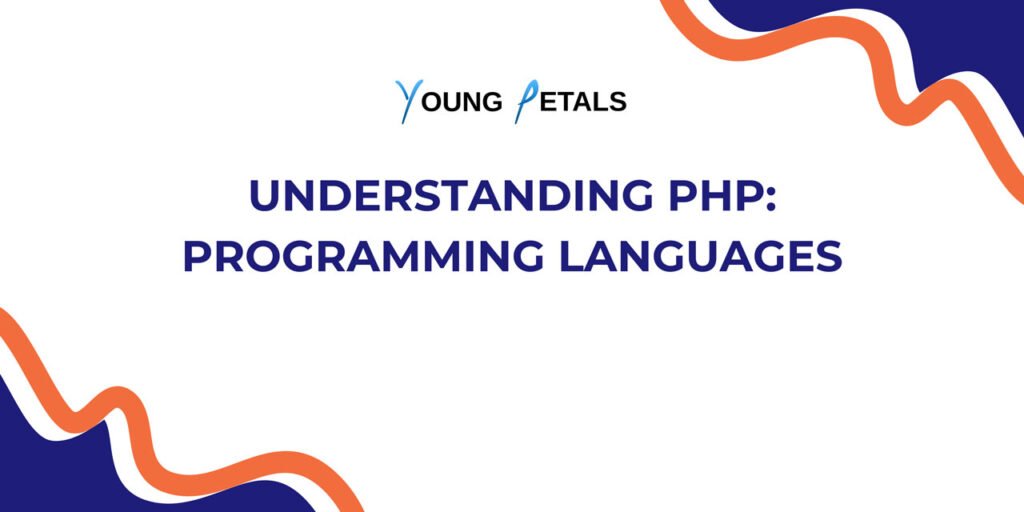Introduction: Understanding Variable Declarations in Modern JavaScript
Variables are the building blocks of any programming language, and JavaScript offers three distinct ways to declare them: var, let, and const. While this might seem like unnecessary complexity at first glance, each declaration method serves specific purposes, and understanding their differences is crucial for writing clean, maintainable JavaScript code.
Think of variables as labeled containers in your program’s memory. Just as you might organize items in different types of storage boxes in your home, JavaScript provides different types of variable containers, each with its own rules about where it can be used and how its contents can be modified.
The Evolution of JavaScript Variable Declarations
Before diving into the technical details, it’s helpful to understand why JavaScript has three ways to declare variables. Originally, JavaScript only had var, but developers encountered various issues with its behavior, particularly around scope and hoisting. To address these problems, ES6 (ECMAScript 2015) introduced let and const, providing more predictable and safer alternatives.
Understanding var: The Original Variable Declaration
What is var?
The var keyword was JavaScript’s original method for declaring variables. While still functional in modern JavaScript, it has several characteristics that can lead to unexpected behavior, especially for developers coming from other programming languages.
// Basic var declaration
var userName = "Alice";
var userAge = 25;
// You can declare without initializing
var userEmail;
userEmail = "alice@example.com";
// Multiple declarations in one line
var firstName = "John", lastName = "Doe", age = 30;
Function Scope vs Block Scope
One of the most important concepts to understand about var is its function scope behavior. Unlike many other programming languages where variables are block-scoped, var declarations are only scoped to the nearest function or globally if declared outside any function.
function demonstrateVarScope() {
if (true) {
var insideBlock = "I'm accessible outside this block!";
}
// This works because var is function-scoped, not block-scoped
console.log(insideBlock); // Output: "I'm accessible outside this block!"
}
// However, this won't work because the variable is scoped to the function
// console.log(insideBlock); // ReferenceError: insideBlock is not defined
This behavior can lead to unexpected results, especially in loops:
// Common mistake with var in loops
for (var i = 0; i < 3; i++) {
setTimeout(function() {
console.log("Loop iteration: " + i); // Will print "Loop iteration: 3" three times
}, 100);
}
// The variable i is function-scoped, so all setTimeout callbacks reference the same variable
Variable Hoisting with var
Hoisting is another characteristic of var that can cause confusion. JavaScript “hoists” var declarations to the top of their scope, meaning the declaration (but not the initialization) is processed before any code is executed.
// What you write:
console.log(hoistedVar); // Output: undefined (not an error!)
var hoistedVar = "Hello World";
// How JavaScript interprets it:
var hoistedVar; // Declaration is hoisted
console.log(hoistedVar); // undefined because initialization hasn't happened yet
hoistedVar = "Hello World"; // Initialization stays in place
Redeclaration with var
Variables declared with var can be redeclared within the same scope without error, which can sometimes mask bugs:
var config = "development";
var config = "production"; // No error, overwrites the previous value
console.log(config); // Output: "production"
Understanding let: Block-Scoped Variable Declaration
What is let?
Introduced in ES6, let provides a more intuitive and safer way to declare variables. The primary advantage of let is its block scope behavior, which aligns with how variables work in most other programming languages.
// Basic let declaration
let userName = "Bob";
let userAge = 28;
// Declaration without initialization
let userEmail; // This is undefined until assigned
userEmail = "bob@example.com";
Block Scope with let
Unlike var, variables declared with let are confined to the block in which they’re declared. A block is defined by curly braces {}.
function demonstrateLetScope() {
if (true) {
let blockScoped = "I'm only accessible within this block";
console.log(blockScoped); // This works
}
// This will throw an error
// console.log(blockScoped); // ReferenceError: blockScoped is not defined
}
// let also works correctly in loops
for (let i = 0; i < 3; i++) {
setTimeout(function() {
console.log("Loop iteration: " + i); // Will print 0, 1, 2 correctly
}, 100);
}
Temporal Dead Zone
Variables declared with let exist in what’s called a “temporal dead zone” from the start of the block until the declaration is reached. This prevents the confusing behavior we saw with var hoisting.
// This will throw an error
console.log(temporalDeadZoneVar); // ReferenceError: Cannot access 'temporalDeadZoneVar' before initialization
let temporalDeadZoneVar = "Now I'm initialized";
No Redeclaration with let
Unlike var, you cannot redeclare a variable using let within the same scope:
let config = "development";
// let config = "production"; // SyntaxError: Identifier 'config' has already been declared
// However, you can reassign the value
config = "production"; // This works fine
console.log(config); // Output: "production"
Understanding const: Immutable Bindings
What is const?
The const keyword creates variables that cannot be reassigned after their initial declaration. This doesn’t mean the value itself is immutable (especially with objects and arrays), but rather that the variable binding cannot be changed.
// Basic const declaration - must initialize at declaration
const PI = 3.14159;
const appName = "My JavaScript App";
// This will throw an error - const must be initialized
// const uninitialized; // SyntaxError: Missing initializer in const declaration
Block Scope and Temporal Dead Zone
Like let, const is block-scoped and exists in the temporal dead zone:
function demonstrateConstScope() {
if (true) {
const blockConstant = "I'm block-scoped too";
console.log(blockConstant); // This works
}
// This will throw an error
// console.log(blockConstant); // ReferenceError: blockConstant is not defined
}
Understanding Immutability with const
It’s crucial to understand that const creates an immutable binding, not an immutable value. For primitive values (strings, numbers, booleans), this effectively makes them immutable. However, for objects and arrays, the contents can still be modified:
// Primitive values with const are truly immutable
const name = "Alice";
// name = "Bob"; // TypeError: Assignment to constant variable
// Objects declared with const can have their properties modified
const user = {
name: "Alice",
age: 25
};
user.age = 26; // This works - we're modifying the object, not reassigning the variable
user.email = "alice@example.com"; // This also works
console.log(user); // Output: { name: "Alice", age: 26, email: "alice@example.com" }
// But we cannot reassign the entire object
// user = { name: "Bob" }; // TypeError: Assignment to constant variable
Working with Arrays and const
Arrays declared with const behave similarly to objects:
const colors = ["red", "green", "blue"];
// These operations work because we're modifying the array, not reassigning the variable
colors.push("yellow");
colors[0] = "crimson";
console.log(colors); // Output: ["crimson", "green", "blue", "yellow"]
// But this would throw an error
// colors = ["purple", "orange"]; // TypeError: Assignment to constant variable
Practical Comparison: When to Use Each Declaration
Decision Tree for Variable Declarations
Understanding when to use each declaration method is essential for writing clean, maintainable code. Here’s a practical approach to making this decision:
Use const when:
- The variable should never be reassigned
- You’re declaring configuration values, API endpoints, or mathematical constants
- You’re working with objects or arrays that will be modified but not replaced
- You want to signal to other developers (and your future self) that this binding should not change
Use let when:
- The variable will be reassigned during its lifetime
- You’re working with loop counters or temporary variables
- You need block-scoped behavior
- You’re migrating from
varand need similar functionality with better scoping
Avoid var unless:
- You’re working with legacy code that requires it
- You specifically need function-scoped behavior (very rare)
- You’re supporting very old JavaScript environments (also increasingly rare)
Real-World Examples
Let’s look at some practical examples that demonstrate appropriate usage:
// Configuration values - use const
const API_URL = "https://api.example.com";
const MAX_RETRY_ATTEMPTS = 3;
const DEFAULT_TIMEOUT = 5000;
// Function that processes user data
function processUserData(userData) {
// Input parameter - could be const if not modified
const userId = userData.id;
// Variable that will change - use let
let processedData = {};
let errorCount = 0;
// Object that will be modified but not reassigned - use const
const validationRules = {
requiredFields: ['name', 'email'],
maxLength: 50
};
// Loop counter - use let
for (let i = 0; i < validationRules.requiredFields.length; i++) {
let fieldName = validationRules.requiredFields[i];
if (!userData[fieldName]) {
errorCount++; // let allows reassignment
processedData[fieldName + '_error'] = 'Field is required';
} else {
processedData[fieldName] = userData[fieldName];
}
}
// Return object - const because we're not reassigning
const result = {
success: errorCount === 0,
data: processedData,
errorCount: errorCount
};
return result;
}
Common Pitfalls and How to Avoid Them
Pitfall 1: Using var in Modern JavaScript
Many developers still default to var out of habit or because they learned JavaScript before ES6. However, this can lead to scope-related bugs:
// Problematic code with var
function processItems(items) {
for (var i = 0; i < items.length; i++) {
// Simulate async operation
setTimeout(function() {
console.log("Processing item at index: " + i); // Will always log the final value of i
}, 100);
}
}
// Better approach with let
function processItemsCorrectly(items) {
for (let i = 0; i < items.length; i++) {
// Each iteration gets its own copy of i
setTimeout(function() {
console.log("Processing item at index: " + i); // Will log 0, 1, 2, etc.
}, 100);
}
}
Pitfall 2: Misunderstanding const with Objects
A common mistake is thinking that const makes objects completely immutable:
// Incorrect assumption - thinking const makes objects immutable
const settings = {
theme: "dark",
language: "en"
};
// This actually works and is often desired behavior
settings.theme = "light";
settings.notifications = true;
// If you truly need an immutable object, use Object.freeze()
const immutableSettings = Object.freeze({
theme: "dark",
language: "en"
});
// This will silently fail in non-strict mode, throw error in strict mode
// immutableSettings.theme = "light";
Pitfall 3: Forgetting Block Scope Rules
Developers coming from var might not immediately grasp the implications of block scope:
// This won't work as expected
function processConditionalData(condition) {
if (condition) {
let conditionalValue = "Important data";
}
// This will throw ReferenceError
// return conditionalValue;
}
// Correct approach - declare in appropriate scope
function processConditionalDataCorrectly(condition) {
let conditionalValue; // Declare in function scope
if (condition) {
conditionalValue = "Important data";
} else {
conditionalValue = "Default data";
}
return conditionalValue;
}
Performance Considerations
Memory Management
Different declaration methods can have subtle performance implications:
const optimizations: JavaScript engines can often optimize const variables better because they know the binding won’t change. This can lead to more efficient memory usage and faster access times.
let vs var performance: In most practical scenarios, the performance difference between let and var is negligible. However, let can sometimes be slightly more expensive due to temporal dead zone checks, but this is usually outweighed by the benefits of better scoping.
Best practice: Choose your declaration method based on semantics and code clarity rather than micro-optimizations. Modern JavaScript engines are highly optimized and will handle performance concerns for you.
Modern JavaScript Best Practices
ESLint Rules for Variable Declarations
Many teams use ESLint rules to enforce consistent variable declaration practices:
// Common ESLint rules for variable declarations
{
"no-var": "error", // Disallow var, prefer let/const
"prefer-const": "error", // Prefer const when variable is not reassigned
"no-undef": "error", // Prevent use of undeclared variables
"block-scoped-var": "error" // Treat var as block-scoped
}
Code Review Guidelines
When reviewing code or writing new JavaScript, consider these guidelines:
Always start with const: Begin by declaring variables with const and only change to let if you discover the variable needs to be reassigned. This approach encourages immutability and makes your code’s intent clearer.
Minimize variable scope: Declare variables as close to where they’re used as possible and in the narrowest scope necessary.
Use descriptive names: Since you have three declaration methods available, you can focus more on choosing meaningful variable names that communicate purpose and intent.
// Good practices example
function calculateOrderTotal(items, discountCode) {
// Start with const for values that won't change
const TAX_RATE = 0.08;
const SHIPPING_THRESHOLD = 50;
// Use let for variables that will be reassigned
let subtotal = 0;
let discountAmount = 0;
// Calculate subtotal
for (const item of items) { // const in for-of loop
subtotal += item.price * item.quantity;
}
// Apply discount if applicable
if (discountCode) {
const discount = validateDiscount(discountCode); // const for single assignment
if (discount) {
discountAmount = subtotal * discount.percentage;
}
}
// Calculate final values
const discountedSubtotal = subtotal - discountAmount;
const tax = discountedSubtotal * TAX_RATE;
const shippingCost = discountedSubtotal >= SHIPPING_THRESHOLD ? 0 : 10;
// Return object - const because we're not reassigning
const orderSummary = {
subtotal: subtotal,
discount: discountAmount,
tax: tax,
shipping: shippingCost,
total: discountedSubtotal + tax + shippingCost
};
return orderSummary;
}
Browser Compatibility and Transpilation
Modern Browser Support
Both let and const are well-supported in modern browsers:
- Chrome 49+ (2016)
- Firefox 44+ (2016)
- Safari 10+ (2016)
- Edge 12+ (2015)
Legacy Browser Support
If you need to support older browsers, tools like Babel can transpile your modern JavaScript code:
// Your modern JavaScript code
const greeting = "Hello";
let name = "World";
// Gets transpiled to
var greeting = "Hello";
var name = "World";
While transpilation handles the syntax conversion, remember that some semantic differences (like temporal dead zone behavior) cannot be perfectly replicated with var.
Conclusion: Building Better JavaScript Applications
Understanding the differences between var, let, and const is fundamental to writing clean, maintainable JavaScript code. These declaration methods are not just syntactic sugar—they represent different approaches to variable management that can significantly impact your code’s reliability and readability.
The journey from var to let and const reflects JavaScript’s evolution toward becoming a more robust and predictable programming language. By embracing let and const, you’re adopting practices that help prevent common bugs, make your code more self-documenting, and align with modern JavaScript development patterns.
Remember that the choice between these declaration methods should be based on the semantic meaning you want to convey. Use const for values that shouldn’t be reassigned, let for variables that will change, and avoid var in new code unless you have specific requirements for function-scoped behavior.
As you continue to develop your JavaScript skills, these foundational concepts will serve as building blocks for more advanced topics like closures, modules, and asynchronous programming. The time invested in understanding variable declarations thoroughly will pay dividends as you tackle more complex JavaScript challenges and build more sophisticated applications.
By following the best practices outlined in this guide, you’ll write JavaScript that is not only functional but also clean, predictable, and maintainable—qualities that become increasingly important as your projects grow in size and complexity.




